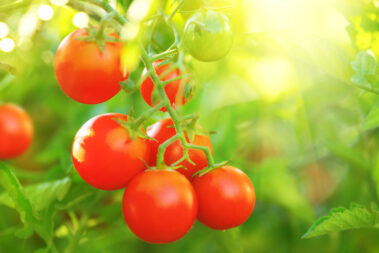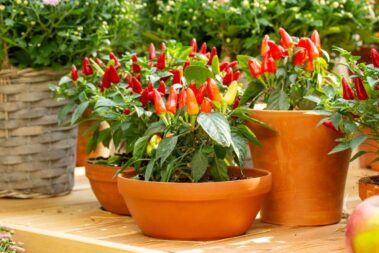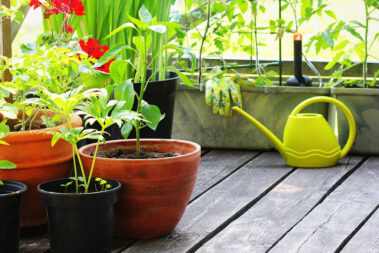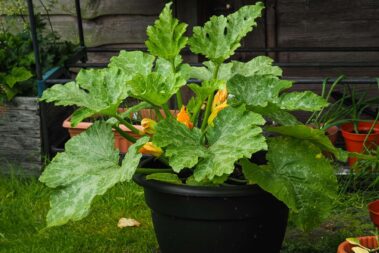If you follow a vegan lifestyle, then you understand how protecting the environment and your own health goes beyond the food you eat. You know how important it is to look for clean, sustainable home care and self-care products and the importance of buying local and cruelty-free.
But if this is the first time you’re hearing about permaculture, odds are you could be doing a lot more to help the planet thrive.
Permaculture and veganism aren’t concepts that are frequently grouped together, but they should be. Both encompass an ethos that goes beyond simple lifestyle choices, and both strive to create a better world for people and animals.
In this article, we answer the question, ‘What is permaculture,’ and look at ways that you, as a homeowner, can institute principles of permaculture to realize how this system can work with your vegan ideals to create a more resilient and happier planet for us all.
Table of Contents
What Is Permaculture?
Permaculture is a holistic design system aimed at creating harmonious relationships between humans, agriculture, and nature. Permaculture philosophy aims to create sustainable and regenerative systems in all aspects of human development, including food production, development, and general land use.
The end goal of permaculture is to create harmonious and resilient ecosystems that function without creating waste, much as healthy natural ecosystems do. One of the greatest challenges of this practice is integrating human needs and balancing them with nature to create a system that mutually benefits both.
The Origins of Permaculture
Permaculture is the brainchild of two Australian visionaries, Bill Mollison and David Holmgren.
Mollison, a biologist, was inspired by his observations of natural ecosystems and traditional indigenous farming practices. His frustration with the prevailing agricultural and environmental degradation practices of the time led him to seek alternative solutions.
In the 1970s, Molson teamed up with his student, David Holmgren, to write a thesis built on this concept, “Permaculture One: A Perennial Agriculture for Human Settlements.” The philosophy of permaculture—a portmanteau of “permanent agriculture” and “permanent culture”—was born out of this thesis.
Permaculture gained recognition in the decades that followed, eventually becoming a global movement adopted by people of diverse backgrounds looking to form a more sustainable relationship with nature while ensuring food security.
Today, permaculture has expanded well beyond its agricultural origins. It encompasses sustainable design principles that can be applied to multiple areas, including architecture, urban planning, water management, and community development.
How Is Permaculture Different from Organic Gardening?
The focus of organic gardening is on using biological substances and solutions to manage pests and nourish crops. In many ways, organic gardening is more sustainable than conventional gardening. The fertilizers and pesticides used are less harmful to the soil and generally have a lower risk of runoff into local waterways.
While many of the features of organic gardening are encompassed within permaculture principles, the scope of organic gardening is far narrower.
The goal of organic gardening is to do as little harm as possible to local fauna and ecosystems by utilizing more natural products. But organic gardening does not place itself within the ecosystems it’s trying to protect.
And that is the central difference between organic and permaculture gardening.
Permaculture takes the idea of doing no harm and expands it, making the garden—and human development in general—not a neutral player outside the local ecosystem, but a pivotal and beneficial member of it.
Applying Permaculture Ethics to Your Yard: 5 Principles
While permaculture principles are wide-reaching, they can be simplified to help guide homeowners looking to do more to create sustainable gardens within their own ecosystem and community.
These five principles can be easily applied to small yards and individual lifestyles to help you and your home do more to help nature and humanity thrive.
Site Assessment and Observation
Observation is a key pillar of permaculture. Before a site can be integrated into a living ecosystem, it needs to be keenly observed to understand the specific conditions of the site, including climate, topography, soil quality, water availability, and existing vegetation.
The same can be done on a much smaller scale in your own yard.
The best way to approach this is to create a base map of your yard and take detailed notes on the various conditions present within it. Include details such as:
- Sun Patterns – Note areas that receive full sun, partial sun, and shade as this information is crucial for plant placement and choosing suitable gardening zones.
- Wind and Weather Patterns – Identify windy or sheltered areas, as these patterns can influence plant health and soil dryness, and affect microclimates.
- Water Flow and Drainage – How does water flow across your property during rain or irrigation? Identify low-lying areas where water tends to pool and areas where it quickly drains away so you can plan water management strategies like rain gardens, swales, or rainwater harvesting.
- Soil Quality – Test the soil throughout your yard so you can understand its composition and quality and choose appropriate plants or amend the soil as needed.
- Existing Vegetation – Assess the health of existing trees, shrubs, and plants. Consider keeping and building upon native and well-adapted species while removing non-native and unhealthy plants.
- Wildlife – Observe the presence of wildlife such as birds, insects, and pollinators. These creatures play a crucial role in a healthy ecosystem and can be encouraged through plant selection and habitat creation.
- Existing Structures and Utilities – Take note of existing structures like buildings, pathways, fences, and utility lines. These elements can influence design decisions and may limit what plants and design elements can go where.
- Historical Weather Data – Use historical weather data for your area to understand temperature ranges, average rainfall, and seasonal climate patterns so you can select appropriate plants and design for resilience.
- Family Needs and Lifestyle – Consider your family’s needs, interests, and daily routines. How do you use your outdoor space? Do you plan to grow your own food? Tailor your permaculture design to meet these needs.
Design
Homeowners—even those with small spaces—can easily apply the design principles of permaculture to create sustainable, productive, and environmentally friendly living spaces.
Utilize the information you gathered during your site observation to place elements of your yard so they have the greatest impact on your overall ecosystem.
Garden beds, for instance, should be placed in areas of your yard that receive the most sunlight. Large trees that utilize a lot of water, such as willows, or water features, should be placed in areas where runoff tends to pool. And yard art can be designed to double as homes for friendly pollinators or even native toads.
Diversity and Companion Planting
Permaculture relies on the planting of diverse species and companion plants to create more productive, resilient, and environmentally friendly landscapes. You can easily use these same principles in your yard.
Start by selecting a range of diverse plants that grow well in your region.
Make sure to include native plants that can help support local wildlife both big and small. Grow a variety of edible plants, including fruit and nut trees, herbs, vegetables, and berries. Try to grow perennial plants where possible since they require less maintenance and contribute more to soil health.
When planning plants for the vegetable and flower garden, consider companion planting in your designs.
There are hundreds of brilliant companion plant combinations out there. One wonderful example is the Native Americans’ “three sisters guild.” This method involves planting corn to support beans, which in turn fixes nitrogen for the soil, and squash, which provides ground cover to prevent weed growth.
Sustainable Practices
One of the most important pillars of permaculture is sustainability. Truly healthy ecosystems do not create waste; everything that’s produced is used by something else.
You can design your own yard to be sustainable on its own products and waste through a variety of practices, including:
- Rainwater Harvesting – Install rain barrels or a rainwater harvesting system to capture and store rainwater from your roof. This harvested water can be used to water your vegetable garden, fill your water features, and even as gray water in the home.
- Composting – Establish a composting system to convert kitchen scraps and yard waste into nutrient-rich compost. Compost improves soil fertility, enhances water retention, and reduces the need for synthetic fertilizers.
- Hugelkultur Beds – Create hugelkultur beds by burying logs and organic matter beneath garden beds. These raised beds retain moisture, improve soil fertility, and reduce the need for irrigation.
- Food Forests – Build your own food forest by planting a variety of fruit and nut trees, shrubs, and ground cover plants that mimic the layers of a forest ecosystem. Food forests can provide a diverse and sustainable source of edible plants.
- Energy-Efficient Designs – Design your home and outdoor spaces with energy efficiency in mind. Use passive solar design principles for your greenhouse and outbuildings to reduce electric heating needs.
- Community Sharing – Share surplus produce, seeds, and knowledge with neighbors and the community. Establishing a sense of community around sustainable practices can lead to collective resilience, resource sharing, and less waste community-wide.
Community and Ethics
One of the biggest differences between permaculture and other gardening practices is that this isn’t just a methodology for gardening—it’s a methodology for living. And at the heart of this lifestyle is a strong sense of community. After all, creating small, isolated plots of resilient ecosystems won’t get us anywhere in the long run.
In order for the small ecosystem you create in your yard to expand into a large ecosystem that’ll sustain diverse life, you need to team up with your neighbors. You can do this through a variety of means.
Sharing resources is a great start. Share the fruits of your garden to help get your community excited about homegrown food. Then share your knowledge through conversation, workshops, and local extensions. Sharing tools and time is equally as important.
Embedded in the community principles of permaculture is a strong set of ethics that serve as the foundation for this movement.
The first principle of this moral foundation is Earth Care. This emphasizes the importance of caring for the Earth and its ecosystems. It recognizes that the well-being of all living things is interconnected with the health and vitality of the planet.
Next, is People Care. This focuses on the well-being and welfare of individuals and communities. It acknowledges that a sustainable and regenerative society requires that people are nurtured, supported, and empowered.
Last, is the principle of Fair Share. This ethics principle calls for the equitable distribution of resources, to both people and planet. It recognizes that overconsumption is not only unsustainable but irrevocably harmful. We cannot all thrive unless we all have access to the essentials needed for life.
More Than a Garden
Permaculture is more than a method of gardening. It’s a way of life that aims to support people, nature, and the planet so that all may thrive together as one resilient community. In this way, permaculture is very much in line with so many ideals inherent in the vegan lifestyle.
If you believe in clean, green, sustainable principles, then you already understand the basic pillars of permaculture. By implementing the five ideals outlined above in your own yard, you can do your small part to help us all live better.
The garden you create is more than just a garden. It’s an ecosystem with unlimited potential. It’s a model for how we can all live in harmony with nature.
- How to Pick the Perfect Watermelon For a Sweet Summer Treat - April 10, 2024
- Future Kind’s Foundations: A Multivitamin Made for Vegans - December 5, 2023
- Does Nutritional Yeast Go Bad? - November 28, 2023







